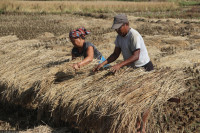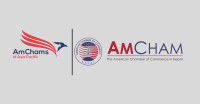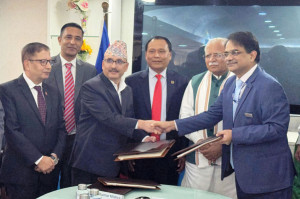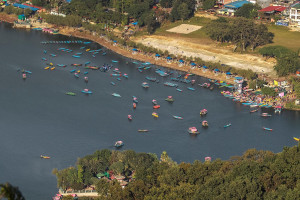Money
Tighter checks for importers producing fake documents: Customs Department
With an increasing number of traders producing fake details on imported goods, the Department of Customs has warned that it may put around 67 percent of these goods under the red customs clearance channel.
With an increasing number of traders producing fake details on imported goods, the Department of Customs has warned that it may put around 67 percent of these goods under the red customs clearance channel.
In Nepal, the imported goods typically pass through one of the three customs clearance channels: red, green and yellow.
Under the red channel, importers need to fulfill a lengthy documentation process. The customs authorities will perform an examination of the import documents as well as a physical examination of the goods.
In the yellow channel, a thorough examination of the import documents is performed while in the green channel, the goods get automatic customs clearance.
“Many importers are still producing fake documents. They have been manipulating the certificate of origin, under invoicing, declaring one product and importing another and issuing fake harmonised system code issued from foreign companies,” said Toyam Raya, director general of the department.
“The illicit activities have not stopped. So we are forced to carry out tight scrutiny of the imported goods.”
“We have also planned to increase the access of importers through the green lane,” Raya said, speaking at an interaction organised by the Federation of Nepalese Chambers of Commerce and Industry here on Wednesday. “If importers come up with genuine documents, it will reduce their hassles and save time.”
On average, 25 percent of the imported goods make their way through the green channel. In the system, the customs clear the goods based on the declaration made by the importers and customs agents.
The department’s statistics show that 44 percent of the imported goods come through the green lane at Birgunj Customs, Nepal’s key trade gateway from where 45 percent of the country’s import is made. According to the department, out of 17,164 declarations during the mid-November to mid-December period, only 47 percent of them were scrutinised strictly. The department claimed that the customs clearance process has been eased after it enforced the HS Code, EXIM Code and customs reference price.
Raya said 85 percent of the imported goods receive customs clearance in a single day. According to him, the department has planned to clear 75-80 percent of the imported goods via green and yellow channel by next year to make the clearance process faster.
According to him, the enforcement of the customs reference price has helped rein in cases of under invoicing. “However, the mechanism has failed to provide a respite for consumers as the importers are still charging exorbitant prices for their products, mainly due to absence of government mechanism to look after the anomalies.”
Speaking at the programme, traders complained about the department charging high fees for EXIM Code and imposing the same rate of customs duty on import of raw materials as well as the finished goods. “In addition, absence of experts at the customs point has led to delays in clearance of raw materials that could be damaged if they are not stored properly,” said Deepak Prasad Dahal, president of Association of Pharmaceutical Producers of Nepal.




 19.12°C Kathmandu
19.12°C Kathmandu














